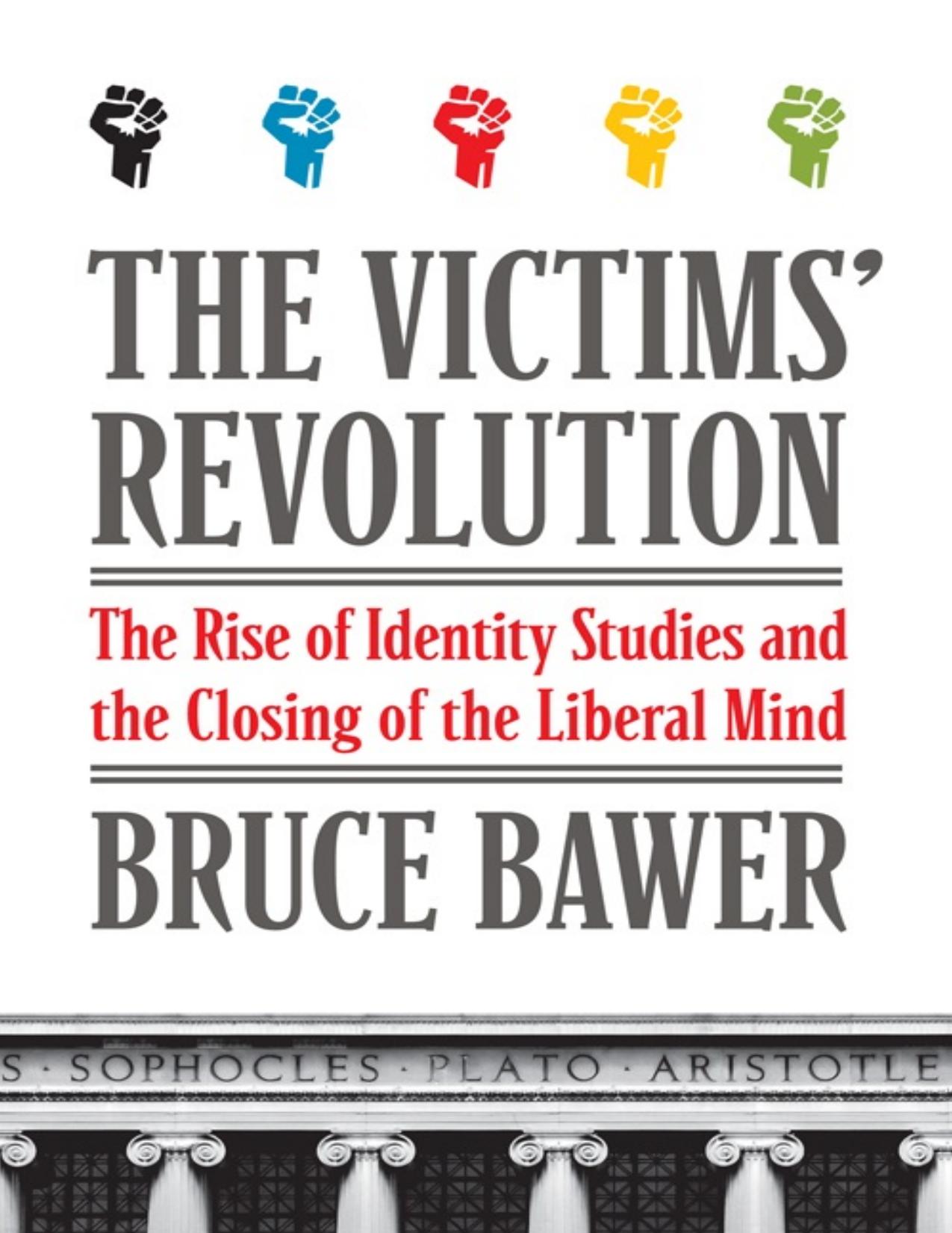The Victims' Revolution: The Rise of Identity Studies and the Closing of the Liberal Mind by Bruce Bawer

Author:Bruce Bawer
Language: eng
Format: mobi, epub, pdf
Tags: Social History, Education, History
ISBN: 9780061807374
Publisher: HarperCollins
Published: 2012-09-04T00:00:00+00:00
Chapter 5
The Dream of Aztlán: Chicano Studies
Over our lunch in Monterey, I ask Shelby Steele about Chicano Studies. “There’s always a conflict between them and Black Studies,” he says. “At the University of Utah I was designing this [Black Studies] program, so they came forward very quickly. Their hustlers were as good as our hustlers. They wanted a piece of the action. So they said to me when the white man left the room, ‘Look here, this is the West, this is our territory.’ And they beat us out. We had one program, with one director for Black and Chicano Studies, and they got the director. It’s pathetic. It’s sad and funny at the same time. They did it that way throughout the Cal State system. Monterey Bay State came into existence when Clinton took the White House and said he would use the ‘peace dividend’ to close down Fort Ord and create a new campus in Monterey. The unspoken implication was that this would be a Chicano campus. They’d put a white [college] president in charge, but he’d be on a leash. From its inception, the idea was that this would be the Hispanic campus.
“Identity politics really shapes the contours of the Cal State system in this way.”
And from the very beginning of Chicano Studies, the Cal State system has been its ground zero.
It was indeed the black civil rights movement that—along with the farmworker activism of César Chávez (whose birthday is now an official holiday in several states)—helped spark the Chicano movement; and it was the birth of Black Studies that gave some Mexican American activists the idea that they, too, deserved their own academic discipline. To be sure, it cannot be said that they had a very clear idea of what the actual objective of these programs should be, and in fact all these years later the purpose of Chicano Studies remains a highly debated question. What is not debatable is the intensity of the passions that gave birth to Chicano Studies. The 1960s Chicano movement—known simply, and universally, as el movimiento—was for its participants a matter of ardent commitment to La Causa and La Raza, though there was much disagreement as to what exactly they were committing themselves to. Were they simply fighting for greater educational and job opportunities and the like? Were they out to transform the American system entirely? Or did they seek to secede from the United States? For many Chicano activists, especially in those early days, the goal (however utopian or quixotic it might now seem) was indeed one of secession: they sought nothing less than to tear the parts of the United States that had once been Mexican territory—including, roughly speaking, the present states of California, Nevada, Utah, Colorado, Arizona, New Mexico, and Texas (which many activists, using the Spanish word, chose to refer to as Tejas)—asunder from the Union and form a new nation. This nation already had a name: it would be called Aztlán, borrowing a place-name from Aztec history.
Download
The Victims' Revolution: The Rise of Identity Studies and the Closing of the Liberal Mind by Bruce Bawer.epub
The Victims' Revolution: The Rise of Identity Studies and the Closing of the Liberal Mind by Bruce Bawer.pdf
This site does not store any files on its server. We only index and link to content provided by other sites. Please contact the content providers to delete copyright contents if any and email us, we'll remove relevant links or contents immediately.
| Administration | Assessment |
| Educational Psychology | Experimental Methods |
| History | Language Experience Approach |
| Philosophy & Social Aspects | Reform & Policy |
| Research |
The Art of Coaching Workbook by Elena Aguilar(48057)
Trainspotting by Irvine Welsh(20051)
Twilight of the Idols With the Antichrist and Ecce Homo by Friedrich Nietzsche(17705)
Fangirl by Rainbow Rowell(7831)
Periodization Training for Sports by Tudor Bompa(7327)
Change Your Questions, Change Your Life by Marilee Adams(6639)
This Is How You Lose Her by Junot Diaz(5764)
Grit by Angela Duckworth(4734)
Red Sparrow by Jason Matthews(4661)
Asking the Right Questions: A Guide to Critical Thinking by M. Neil Browne & Stuart M. Keeley(4573)
Paper Towns by Green John(4168)
Room 212 by Kate Stewart(4102)
Ken Follett - World without end by Ken Follett(3972)
The Sports Rules Book by Human Kinetics(3585)
Housekeeping by Marilynne Robinson(3401)
The Motorcycle Diaries by Ernesto Che Guevara(3332)
Introduction to Kinesiology by Shirl J. Hoffman(3299)
Exercise Technique Manual for Resistance Training by National Strength & Conditioning Association(3290)
Double Down (Diary of a Wimpy Kid Book 11) by Jeff Kinney(3272)
